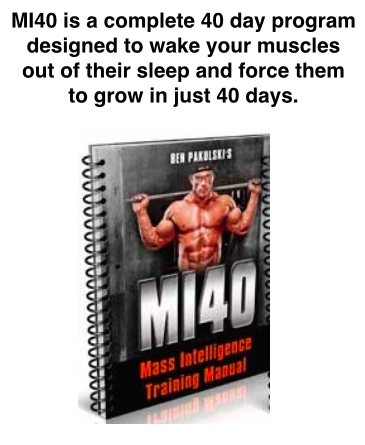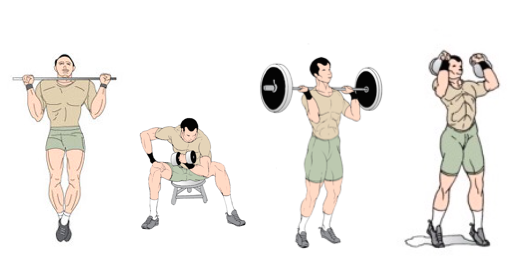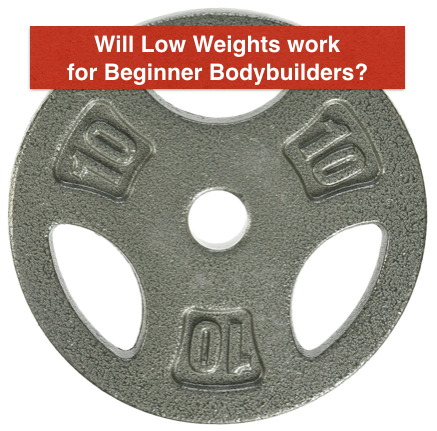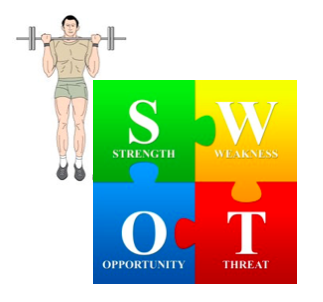The Muscle Homeostasis Principle Or Why is Muscle Gain So Difficult
Homeostasis or the concept of body trying to maintain your present bodyweight and not wanting to add muscle mass is your biggest enemy for fast muscle gains. Find out the Performance first principle and how to use it to blast though muscle homeostasis.

Inside This Article:
- Why is Muscle Gain So difficult
- What is Muscle Homeostasis
- How to overcome Muscle Homeostasis & Gain Mass
- Recommended Programs to Beat Slow muscle gains
- Summary and Next Step
Why is it so difficult to gain muscle mass?

Have you ever wondered why is so hard to get bigger muscles fast?
You train hard, eat like there's no tomorrow and gulp protein shakes everyday hoping that by end of the week, the weight scale moves up. You do everything possible to gain weight but you start to feel as if something is working against you.
And you are right. Actually you have one enemy working against yourself: Your muscle themselves!
Thats right. Your muscles are in no mood to get big or strong and are very comfortable at your bodyweight.
I learnt this lesson the hard way...
My 24 lbs muscle gain story in 15 short weeks might sound incredible but you might not know that my first lesson in muscle building came a s shock to me.
"Muscles DO NOT want to grow Big and Strong at all"!
This discovery was my first lesson in muscle physiology {and one of my first professional lesson too as I learned during my Masters in Physiology}.
As muscle builders we are looking for the fastest way to gain muscle but it seems our muscles are on a different mission: they are happy resting and resist ANY change.
But why does the body do that?
Let me explain you with an example...
Let’s assume you desperately want to gain muscle and you are very serious about training and nutrition.
Let’s also assume I gave you two options
Option One: Train hard, sweat and tolerate lots of pain to build muscle OR
Option two: Sit on a couch, sip your favourite drink and watch TV and continue to build muscle
Don’t tell me which option you chose
I know already.
But hang on a second. You said you wanted to gain muscle mass right? So why did you select option Two?
Your reason to select option two is the exact reason why your body and muscles choose to rest and relax.
Given an option your body would rather rest, relax and remain skinny & weak than add any muscle mass.
Just like you {and me}, your muscles hate to work when they rather be relaxing. What explains the muscle bad mood?
The "Muscle Homeostasis" Principle explains the Muscle Bad Mood
"If there is no struggle, there is no progress".
-Frederick Douglass
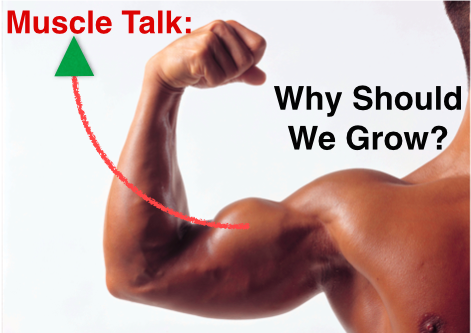 Unless Forced, Muscle love to stay Cool!
Unless Forced, Muscle love to stay Cool!Muscle Homeostasis explains Why Muscles resist getting bigger and stronger
Muscles resist change because they have a higher purpose to achieve. The physiology of the human body including muscles have one main purpose: survival!
Everything else comes second.
Be it building muscle, losing fat, climbing mountains or deep sea diving - these are not your body’s main goals.
This concept is called homeostasis.
"Homeostasis means maintenance of constant internal environment of the body"
{homeo - similar, stasis - standing still}.
This concept was first described by Clause Bernard, a French Physiologist in 1865 and word homeostasis was coined by Walter B. Cannon in 1926. {1}
Here's a simple example how homeostasis works:
If outside environmental temperature goes down, your body increases inner temperature and keeps things constant {homeostasis} and it does the opposite when temperature goes up. Body has complicated mechanisms to do that.
But why does it do that? Because in order to survive our body needs constant internal temperature, constant pH, and other biochemical values for optimal hormone and enzyme functioning. Or else we get disease.
Similarly building muscles, unless your body feels doing so is in its favour, is not on a priority list!
Why Gaining Muscle Mass is so difficult
And what does your body do to avoid muscle gain.
The Goal of homeostasis is to keep you small and weak so that your body doesn't have to spend much energy. Remember survival?
And to achieve this, your body does everything to avoid getting bigger. Your body,
- gives you pain during workouts, it wants you to give up
- gives you muscle soreness after workouts,
- even demotivate you from working on big exercises like squats and deadlifts.
Body resists muscle growth because muscles are expensive for the body. They are metabolically active organs and spend lots of energy, doing exactly opposite of what human body wants - survive by spending least energy possible.
So when you try to build bigger muscles, homeostasis is your enemy. Your muscles would rather sleep than sweat out in the gym. Your muscles are simply not on your side. {Now you know why you sometimes lack workout motivation, your muscles and your body are simply not on your side}.
So How Can you wake Muscles out of their Slumber & Gain mass?
"Homeostasis is the dreaded status quo. Fight it and win muscle". -Mateen Sidd
Now that you know your muscles {and brain} are energy saving systems and would rather rest and relax on a couch eating chips than do anything that spends energy, how can you make muscles grow?
Since change is hard and Muscle Building is expensive, in order to build muscles mass, you have to force your body to grow.
That's right. Bring muscles on your side, and gaining mass will be a lot easier.
Make your body believe that its the body's idea and in its best interest to add muscle mass.
But how do you do that exactly?
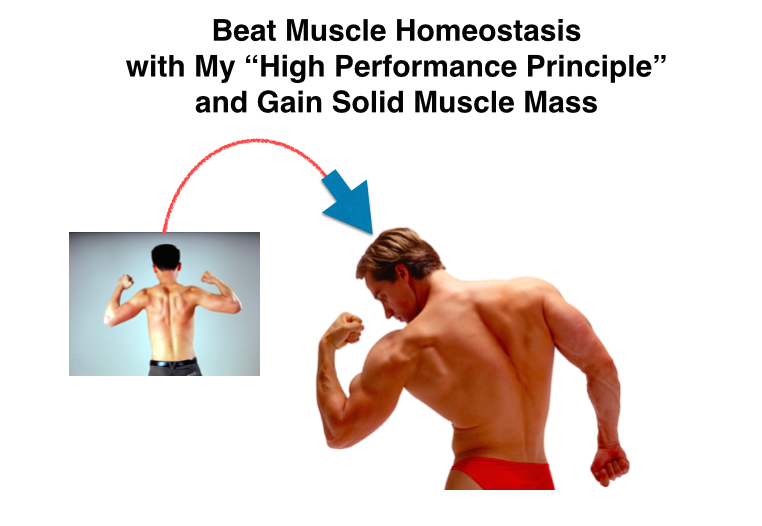
"Make Performance your Outcome and Your Muscles will Respond by Getting Bigger & Stronger"
Guess what happens when you constantly increase loads {progressive resistance overload principle} in the gym every week?
Your body considers this as a threat to its survival. It feels the muscles are under stress and it needs to do something to make them get back to comfort zone of homeostasis.
After 2-3 weeks your body realises that it cannot continue to lift heavy unless it grows stronger and bigger. You left it no choice. It cannot remain small and weak.
Your body has to add muscle mass, else it will be difficult for it to bear the load. Your body,
- makes brain and nerves efficiently,
- starts protein synthesis in muscles {muscle growth}
- add more size to muscle fibers
- Loads more creatinine, glycogen and water into muscles increasing muscle strength
This is called the principle of Musclular Adaptation. Your muscles adapt to the overload training. How?
Your Body builds bigger and stronger muscles
Why? Because your body wants to do things the easy way. And in our case, it needs bigger muscles to lift loads easily.
Adding muscle mass will make it easier for your body because bigger muscles will easily lift the heavier loads. Instead of being the enemy, homeostasis now becomes your friend and your body becomes muscle building factory provided you eat well and rest enough.
Notes:
1. I assume that your nutrition, supplementation and recovery are in order. {3} Training hard without diet and recovery DOES NOT build muscle.
2. Unless you change workout variables, the body will adjust to the new bodyweight and stay there at new level of muscle homeostasis. To get even bigger you need to constantly make small changes to training, nutrition and supplementation. The workout and nutrition sections will help you do that.
Performance First, Muscle Mass Next
But how do you improve performance and how to know if you have improved?
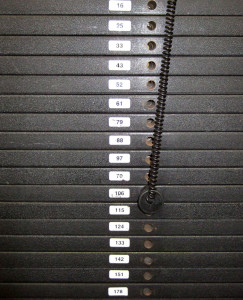 Aim to Improve on all Lifts EVERY 1-2 weeks
Aim to Improve on all Lifts EVERY 1-2 weeksNow that you know that if you improve your performance muscle mass will follow, how exactly do you improve it? You do that by using the principle of progressive muscular overload and training specifically for muscle hypertrophy.
My 5 Percent strength Solution or 2 Rep Method
Here's How 5% Solution works: Increase 5 pounds on all major lifts and 2.5 pounds on smaller muscle group exercises EVERY week or two. This is the best way I have used to improve performance.
I use this principle to create exceptional results for myself and my clients every week. I call it my 5 pound solution. Training with high tension techniques is proven to result in muscle hypertrophy. {2}
Here's how the Rep Method works: Alternatively, keep the weight constant and add 1-2 reps for the exercise. This increases metabolic stress and cause muscle damage, both proven to stimulate muscle growth. {4}
So the next time you train hard and eat well, remember homeostasis is your real challenge and by improving your performance in the gym and on the kitchen table constantly, you will leave your body no chance but to grow, grow, and grow.
Note:
1. I have refined the 5 pound solution over years and now use 5% strength solution wherein you increase the weights on bar by 5%. If you do biceps curls with 100 lbs, try 105 lbs next workout.
2. Overloading is not the only way to improve performance. You can reduce rest intervals, add reps and even add sets to improve performance. I cover these strategies in the Muscle Building Workouts section.
Recommended Program to Blast through Muscle Homeostasis
Summary and Action Plan
- Your muscles resists growth, a principle called muscle homeostasis
- Muscles do this to survive spending least energy possible.
- Homeostasis is your biggest enemy for building muscle mass
- Putting performance first ensures you give reasons for muscles to grow
- Target Performance, and muscle mass follows
What's Next in Your Muscle building journey?
Once you have learnt the muscle homeostasis principle or why your muscles won’t change, you need to discover the awesome Overload principle or Progressive Muscular Resistance principle for optimal muscle training.
References
1. Cannon, W. B. (1926). "Physiological regulation of normal states: some tentative postulates concerning biological homeostatics". Pettit in A. (ed.). A Charles Richet: his friends, his colleagues, his students (in French). Paris: Publishing Medical. p. 91.
2. Goldspink, G. Gene expression in skeletal muscle. Biochem Soc Trans 30: 285–290, 2002.
3. Levenhagen, D.K., Gresham, J.D., Carlson, M.G., Maron, D.J., Borel, M.J., & Flakoll, P.J. (2001). Postexercise nutrient intake timing in humans is critical to recovery of leg glucose and protein homeostasis. American Journal of Physiology, E280, 982-993
4. Brad Schoenfeld BJ. The mechanisms of muscle hypertrophy and their application to resistance training. J Strength Cond Res. 2010 Oct;24(10):2857-72. doi: 10.1519/JSC.0b013e3181e840f3.
FREE DOWNLOADS
Download Your Muscle Building Cheat Sheet Now!
Recent Articles
-
Bodybuilding Workouts & Muscle Building Workout Routines that Build Muscle
Jul 01, 17 09:52 AM
Discover effective bodybuilding workouts and muscle building routines with strategies to make every workout a killer one. Download free 3-day, 4-day or 5-day workout routines. -
Why Beginner Bodybuilders must use Light Weights for Muscle Gain
Jul 01, 17 09:44 AM
Discover the science why beginner bodybuilders must use light to moderate weights to gain maximum muscle mass in the first 2-3 months of training to gain muscle, prevent injuries and grow bigger. -
How to do a S.W.O.T Analysis of Your Bodybuilding Workout
Oct 26, 16 01:41 AM
Looking to take your bodybuilding workout to the next level? Then do a SWOT analysis of your muscle building workout to increase your lifts every workout.
